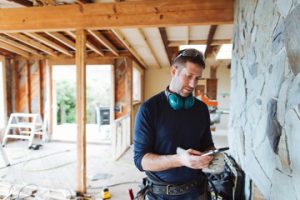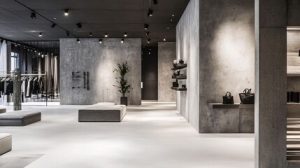Property improvement projects—whether for homes, commercial buildings, or large-scale facilities—require the expertise of experienced professionals who understand construction, design, and efficient project management. General contractors play a critical role in bringing these improvements to life. They coordinate labor, oversee timelines, manage materials, ensure compliance with building standards, and deliver results that enhance the value, functionality, and appearance of any property.
When property owners choose professional General Contractors Greensboro NC services, they gain confidence knowing their investments are handled with precision and care. Whether it’s renovating an aging home, expanding a business facility, building new structures, or upgrading essential features, general contractors provide the knowledge, skill, and resources necessary to complete projects on time, within budget, and at the highest level of quality.

The Importance of Hiring Professional General Contractors
General contractors are responsible for managing every aspect of a construction or renovation project. Their role includes planning, coordination, budgeting, hiring subcontractors, scheduling work, procuring materials, and ensuring the project runs smoothly from start to finish. Without professional oversight, projects often face delays, unexpected expenses, safety concerns, and quality issues.
Skilled general contractors bring structure and efficiency to the project. They provide expert problem-solving, industry knowledge, and technical experience that help streamline construction processes. Their expertise ensures all work is performed to professional standards while maintaining strict safety protocols.
How General Contractors Improve Home and Business Properties
Professional general contracting services offer significant benefits that positively impact both residential and commercial buildings. These improvements enhance the property’s structural integrity, functionality, visual appeal, and long-term value.
1. Enhanced Structural Stability
Contractors ensure that all foundations, frameworks, and structural elements are built correctly. This enhances safety, prevents long-term issues, and ensures the property remains durable and stable.
2. Improved Aesthetic Appeal
Through remodeling, design enhancements, and quality finish work, contractors improve the overall look of a home or business. This can significantly boost curb appeal and customer perception.
3. Increased Property Value
Well-managed improvements can dramatically increase market value. Whether it’s a home renovation or a commercial upgrade, property value grows when the work is performed professionally.
4. Better Energy Efficiency
General contractors can upgrade insulation, windows, roofing, and HVAC components to help reduce energy costs and enhance the property’s efficiency.
5. Optimized Functionality
Improved layouts, better use of space, and upgraded surfaces all contribute to greater functionality for property owners, employees, and guests.
Types of Projects Managed by General Contractors
General contractors handle a wide array of property improvement projects. Their versatility allows them to work on both small-scale renovations and large construction assignments.
Below are some of the most common projects they manage:
1. Home Renovations and Remodeling
Home renovations are among the most popular services provided by general contractors. These projects may include:
- Kitchen remodeling
- Bathroom upgrades
- Room additions
- Basement finishing
- Flooring replacement
- Wall removal and open-concept redesign
- Interior and exterior painting
Professionals ensure that each renovation is completed with precision, style, and structural integrity.
2. New Construction Projects
General contractors oversee new construction, such as:
- Residential homes
- Commercial buildings
- Garages and workshops
- Detached structures
- Outdoor living spaces
They coordinate all aspects of the build, including framing, foundation work, electrical installation, plumbing, roofing, and interior finishing.
3. Commercial Renovations and Upgrades
Businesses often rely on general contractors to handle improvements such as:
- Office renovations
- Retail space upgrades
- Restaurant build-outs
- Warehouse improvements
- Accessibility upgrades
- Lobby redesigns
Commercial projects require careful planning to minimize downtime and maintain safety standards. Experienced contractors ensure the job is done efficiently to support business operations.
4. Exterior Improvements
Enhancing the exterior of a property improves both value and protection. Contractors provide:
- Roof replacements
- Siding installation
- Window and door upgrades
- Deck and patio construction
- Concrete work
- Landscaping enhancements
These improvements contribute to curb appeal and protect the property from environmental damage.
5. Structural Repairs
Over time, properties can develop structural issues that require professional attention. Contractors handle repairs such as:
- Foundation issues
- Roofing problems
- Water damage restoration
- Load-bearing wall reinforcement
- Termite or pest damage repairs
Addressing these issues quickly helps prevent expensive long-term damage.
6. Electrical, Plumbing, and Mechanical Upgrades
Licensed subcontractors work under the contractor’s direction to improve essential building systems. This ensures code compliance, safety, and optimal operation.
Why Professional General Contractors Deliver Reliable Results
Professional general contractors offer reliability through their expertise, planning, and project management skills. Their ability to anticipate challenges and maintain high-quality standards ensures successful project completion.
Here’s how they provide dependable property improvements:
1. Comprehensive Project Planning
Contractors begin with detailed assessments and planning. They evaluate project requirements, estimate materials, create timelines, and plan construction phases.
Proper planning helps avoid delays, reduces mistakes, and ensures the project progresses smoothly.
2. Access to Skilled Tradespeople
General contractors work with skilled subcontractors, including electricians, plumbers, carpenters, masons, painters, and flooring installers. They ensure that every component of the project is handled by trained professionals.
3. Efficient Budget Management
Contractors monitor expenses, material costs, and labor to ensure the project stays within budget. They also secure competitively priced materials through trusted suppliers.
4. High-Quality Materials and Workmanship
Using proper materials and expert craftsmanship helps ensure long-lasting results. Contractors select materials that meet the project’s requirements and enhance durability.
5. Timely Project Completion
General contractors coordinate schedules, manage labor, and maintain a steady workflow to ensure timely completion. Their organizational skills help prevent unnecessary delays.
6. Compliance with Building Standards
Construction projects must follow strict building codes. Professionals ensure that all work adheres to these standards for safety and long-term performance.
The Value of Professional Construction and Renovation Services
Property owners benefit significantly when they invest in professional general contracting services. Whether improving a home or upgrading a business facility, these services offer:
• Long-Term Cost Savings
Proper construction reduces the risk of costly repairs and maintenance in the future.
• Enhanced Safety
Professionals prioritize safety protocols, reducing hazards during and after construction.
• Improved Aesthetics
Quality craftsmanship makes the property look more appealing and welcoming.
• Custom Design Options
Contractors help clients personalize their spaces with custom features and thoughtful layout improvements.
• Increased Property Efficiency
Modern upgrades can reduce energy consumption and enhance comfort.
What to Look for When Hiring a General Contractor
Choosing the right contractor ensures that your project is completed successfully. Property owners should look for:
1. Experience and Credentials
Contractors with years of experience provide more reliable and proven results.
2. Detailed Estimates
A clear outline of project costs helps avoid hidden fees and unexpected expenses.
3. Strong Communication Skills
Contractors should communicate clearly about timelines, expectations, and progress.
4. Positive Reviews or References
Feedback from past clients helps confirm the reliability and quality of work.
5. Comprehensive Services
The ability to handle everything from design to completion ensures a seamless process.
6. Use of Quality Materials
Materials play a major role in the longevity of a project.
Professional general contracting services are essential for reliable home and business improvements. From renovations and repairs to new construction and system upgrades, general contractors provide the oversight, craftsmanship, and expertise necessary to ensure successful project outcomes. With proper planning, quality materials, skilled labor, and strong project management, contractors deliver results that enhance value, safety, and functionality.
Investing in a skilled general contractor not only improves the immediate appearance and structure of a property but also contributes to long-term durability and increased market worth. Whether you are planning a home renovation, expanding a business facility, or building from the ground up, professional general contracting services offer the dependable solutions needed to turn your vision into reality.



